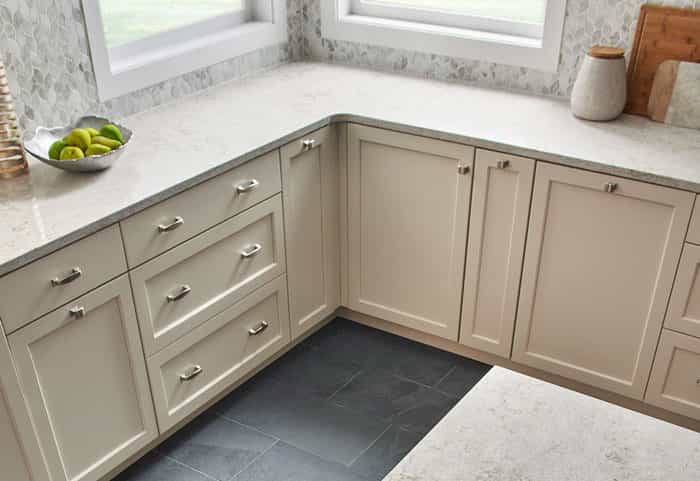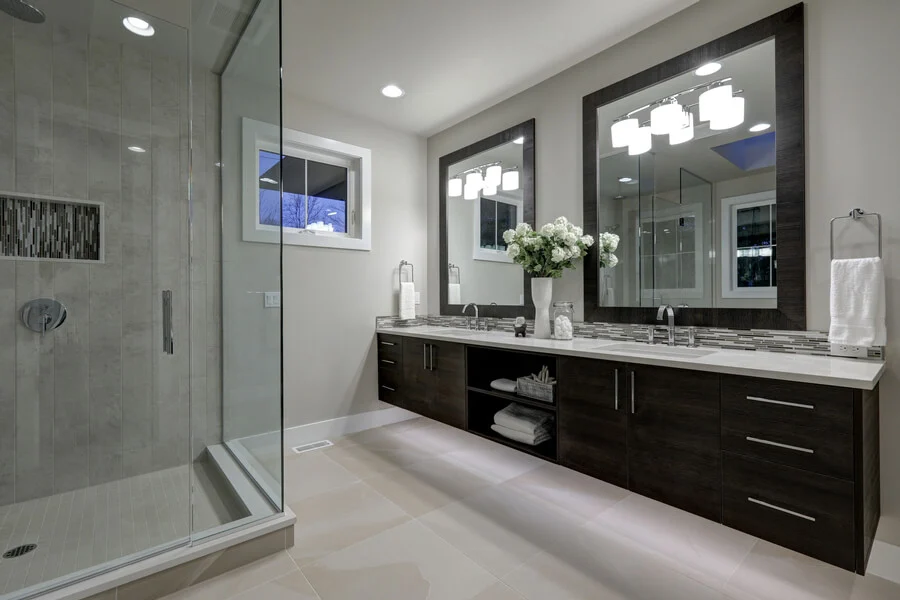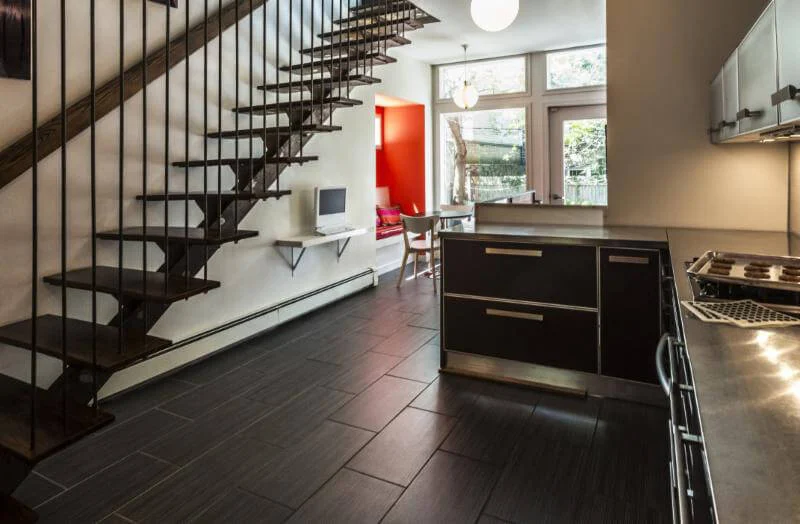Is it time to update your cabinets and bring your Rhode Island kitchen out of the dark ages and into a modern and sleek style? Perhaps you’re into timeless classic designs, industrial looks, or vibrant energetic flows. No matter what your “style”, there’s no shortage of kitchen cabinets to choose from at Northeast Kitchen and Flooring Center.
But the question remains: Should you go with stock (RTA) cabinets, semi-custom cabinets, or perhaps custom cabinets?
Your choices for cabinets can quickly become more involved than you first realized, so here is a handy guide to help you make the right decision and give you some additional kitchen remodeling ideas to consider along the way…
Stock (RTA) Cabinets
Stock cabinets, otherwise known as RTA cabinets, are the most economical type of cabinet. RTA stands for “ready to assemble”. These pre-built cabinets come in limited designs and a few standard sizes but are quick, easy and simple cabinetry solutions to consider.
Although this is a cheaper method for installing cabinets, it may be difficult to fit custom areas. These cabinets can be bought straight off the shelf or delivered within 1 to 2 weeks.
One thing to watch out for with some brands and “bottom budget” options is that these cabinets sometimes use low-quality materials in order to keep costs down. These cabinets are often partially made of particle board, which is less durable and prone to damage and wear from use and moisture. The cabinets often also ship out in flat boxes and can be difficult to assemble although some can be delivered assembled for an additional charge.
Semi-Custom Cabinets
Semi-Custom Cabinets are a mix between stock cabinet benefits and custom cabinet benefits. These cabinets offer many popular styles and colors, perfect for your Rhode Island kitchen remodeling project. Adjustments can be made in three-inch increments to fit custom spaces.
Semi-custom cabinets are made of high-quality material with detailed engineering. Delivery time for these cabinets often ranges between 4 and 8 weeks. A limited lifetime warranty is usually offered.
Custom Cabinets
At the other end of the scale are fully custom cabinetry options. Custom cabinets are generally the most expensive of the three options, yet provide a level of quality and customization that can’t be had with other options.
Custom cabinets are able to fit any specifications, but often have long lead times for production. The quality of the cabinet, price of materials, and delivery time also vary widely, so be sure to discuss your needs, budget and timeline with your provider.
Custom cabinets can take up to 6 to 10 weeks, or even more, for delivery. Since options, pricing, and warranties vary greatly by company, it can be difficult to get the best deal.
At Northeast Kitchen and Flooring Center, our cabinetry remodeling and design experts can help walk you through your options, making sure you find the perfect fit for your Rhode Island home and kitchen.
The Best Option for Your Rhode Island Kitchen
While stock (RTA) cabinets are economical, and custom cabinets may offer the widest options, semi-custom cabinets are often the best fit, giving you the best of both worlds in an economical package.
Semi-custom products provide moderate customization, a broad range of design options, quality builds and mid-tier pricing that makes them an attractive offering to consider.
Why Custom Might not be the Right Choice
It is easy to assume that RTA is low-quality, semi-custom is mid-range, and custom is the best quality, but that’s a very narrow way to look at things. The difference in build quality occurs at the manufacturing level. Stock cabinets may be made of plywood, while a custom cabinet could actually be made of particle board. As such, it’s advisable to always do your research and ask questions before nailing down your final decision.
Another difference can be in the finishing. Stock and semi-custom made cabinets often come with a professional industrial finishing job, while a custom cabinet maker may not have the skills for quality finishing.
Northeast Kitchen & Flooring is a great place to discuss your kitchen remodeling ideas and find quality solutions that meet or exceed your expectations, all while staying within budget. Our friendly and experienced team can help you find the best semi-custom cabinets for your kitchen and provide you with professional, efficient installation.





